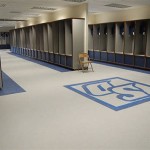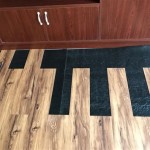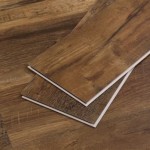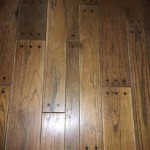```html
Windsor Plywood Engineered Flooring: A Comprehensive Overview
Windsor Plywood has established itself as a reputable provider of building materials and home improvement products across Canada. Among their diverse offerings, engineered flooring stands out as a popular choice for homeowners and contractors alike, offering a balance of aesthetics, durability, and affordability. This article will provide a comprehensive overview of Windsor Plywood’s engineered flooring, detailing its construction, advantages, maintenance, and factors to consider when selecting the right option for specific needs.
Engineered flooring differs significantly from solid hardwood in its construction. While solid hardwood consists of a single piece of wood, engineered flooring is composed of multiple layers bonded together. Typically, the top layer, known as the veneer, is a thin slice of real hardwood. This veneer provides the desired aesthetic appeal, mimicking the look and feel of solid hardwood floors. Beneath the veneer lies a core, usually constructed of multiple layers of plywood, high-density fiberboard (HDF), or softwood. These core layers are oriented in different directions to enhance dimensional stability and resistance to warping or expansion/contraction due to changes in humidity and temperature.
Windsor Plywood offers a variety of engineered flooring options, differing in veneer species, core materials, plank dimensions, and finishing techniques. Understanding these differences is crucial for making an informed decision that aligns with specific project requirements and aesthetic preferences.
Advantages of Windsor Plywood Engineered Flooring
Engineered flooring offers several advantages over other flooring materials, including solid hardwood, laminate, and tile. These benefits contribute to its increasing popularity in residential and commercial applications.
Dimensional Stability: Engineered flooring is significantly more stable than solid hardwood, making it less susceptible to warping, cupping, or gapping in environments with fluctuating humidity levels. This stability is a direct result of its multi-layered construction, where the alternating grain directions of the core layers counteract the natural tendency of wood to expand and contract. This makes engineered flooring a suitable choice for installation in basements, bathrooms, and other areas where moisture levels may be a concern. Solid hardwood, on the other hand, is more prone to movement in these conditions, potentially leading to costly repairs or replacements.
Cost-Effectiveness: While the initial cost of engineered flooring can vary depending on the species, quality, and finish, it is generally more affordable than solid hardwood. This cost-effectiveness stems from the efficient use of hardwood resources, as only a thin veneer is required to achieve the desired aesthetic. The core layers, often composed of more readily available and less expensive materials, contribute to the overall cost savings. Furthermore, the relatively easier installation process of some engineered flooring products can further reduce project expenses by minimizing labor costs. This makes engineered flooring an attractive option for budget-conscious homeowners seeking the look and feel of hardwood without the associated price tag.
Versatility: Engineered flooring can be installed in a wider range of applications compared to solid hardwood. Its dimensional stability allows for installation over concrete subfloors, radiant heating systems, and even in below-grade spaces where moisture levels may be higher. This versatility opens up possibilities for incorporating hardwood aesthetics in various areas of a home or building. The availability of different installation methods, such as glue-down, nail-down, and floating, further enhances its adaptability to diverse project requirements. Moreover, the wide array of veneer species, plank sizes, and finishes offered by Windsor Plywood allows for customization to suit a variety of design styles, from traditional to contemporary.
Considerations When Choosing Windsor Plywood Engineered Flooring
Selecting the right engineered flooring option requires careful consideration of several factors. Evaluating these aspects ensures that the chosen product meets the specific needs and expectations of the project.
Veneer Thickness: The thickness of the hardwood veneer is a critical factor determining the durability and longevity of the flooring. A thicker veneer allows for more refinishing over the lifespan of the floor, enabling restoration of its appearance after years of wear and tear. Thinner veneers, while often more affordable, may limit the number of times the floor can be sanded and refinished. Therefore, it is essential to consider the expected level of foot traffic and the desired lifespan of the flooring when selecting a product with an appropriate veneer thickness. For high-traffic areas, opting for a thicker veneer is generally recommended to ensure long-term performance and maintainability.
Core Material: The type of core material used in engineered flooring significantly impacts its stability, water resistance, and overall performance. Plywood cores are known for their strength and resistance to moisture, making them a suitable choice for areas with potential humidity fluctuations. High-density fiberboard (HDF) cores offer excellent stability and a smooth surface for the veneer, but may be more susceptible to water damage. Softwood cores are often used in lower-cost engineered flooring options but may not offer the same level of durability and moisture resistance as plywood or HDF cores. Understanding the properties of different core materials is crucial for selecting a product that can withstand the environmental conditions and usage demands of the intended application.
Finish and Texture: The finish and texture of engineered flooring contribute significantly to its aesthetic appeal and resistance to wear and tear. Windsor Plywood offers a variety of finishes, including polyurethane, acrylic, and oil-based options, each with its own characteristics in terms of durability, sheen, and maintenance requirements. Polyurethane finishes are known for their scratch resistance and ease of cleaning, while oil-based finishes offer a more natural look and feel. The texture of the flooring, whether smooth, hand-scraped, or wire-brushed, also influences its appearance and tactile experience. Selecting a finish and texture that complements the overall design aesthetic and matches the lifestyle of the occupants is essential for creating a visually appealing and functional space.
Installation and Maintenance of Windsor Plywood Engineered Flooring
Proper installation and ongoing maintenance are crucial for maximizing the lifespan and preserving the appearance of Windsor Plywood engineered flooring. Following recommended guidelines ensures optimal performance and minimizes the risk of damage or premature wear.
Installation Methods: Engineered flooring can be installed using various methods, including glue-down, nail-down, and floating. The glue-down method involves adhering the flooring directly to the subfloor, providing a solid and stable surface. The nail-down method uses nails or staples to secure the flooring to a wooden subfloor. The floating method involves interlocking the planks together and allowing them to "float" above the subfloor, without being directly attached. The choice of installation method depends on the type of subfloor, the specific flooring product, and the desired level of stability. Consulting with a professional installer is recommended to determine the most appropriate method for a particular project.
Cleaning and Maintenance: Regular cleaning and maintenance are essential for preventing dirt and grime from accumulating and damaging the finish of engineered flooring. Sweeping or vacuuming regularly removes loose debris, while occasional damp mopping with a manufacturer-recommended cleaning solution helps to maintain the floor's shine. Avoid using abrasive cleaners, harsh chemicals, or excessive water, as these can damage the finish and potentially warp the core layers. Placing mats at entryways and using furniture pads under heavy objects can help to prevent scratches and dents. Following these simple maintenance practices can significantly extend the lifespan and preserve the beauty of engineered flooring.
Addressing Scratches and Damage: Despite its durability, engineered flooring can be susceptible to scratches and damage over time. Minor scratches can often be repaired with touch-up kits or stain markers that match the color of the finish. Deeper scratches or gouges may require professional repair or replacement of individual planks. Addressing damage promptly prevents it from worsening and helps to maintain the overall appearance of the floor. Regular inspection of the flooring can help to identify potential problems early on, allowing for timely intervention and preventing costly repairs.
In conclusion, Windsor Plywood engineered flooring offers a versatile and cost-effective solution for achieving the aesthetic appeal of hardwood floors with enhanced stability and durability. By carefully considering the veneer thickness, core material, finish, installation method, and maintenance requirements, homeowners and contractors can select the right engineered flooring option to meet their specific needs and create a beautiful and long-lasting flooring solution.
```
Flooring Getting Down To It Windsor Plywood

Flooring Getting Down To It Windsor Plywood

Flooring Home Improvement Windsor Plywood

Solid Hardwood Flooring Home Improvement Windsor Plywood

Solid Hardwood Flooring Home Improvement Windsor Plywood

Vinyl Flooring Home Improvement Page 4 Of 5 Windsor Plywood

Vinyl Flooring Home Improvement Page 2 Of 5 Windsor Plywood

Teak Hardwood Lumber Windsor Plywood
/QY%20Floors/NEW%20IMAGES%20JAN%202024/WIN284-600x600.png?strip=all)
Windsor Engineered Real Wood Oak Stone Brushed Uv Oiled

Hand Sc Windsor White Oak Flooring Hardwood Bargains Www Hardwoodbargains Com Wire Brushed Html








